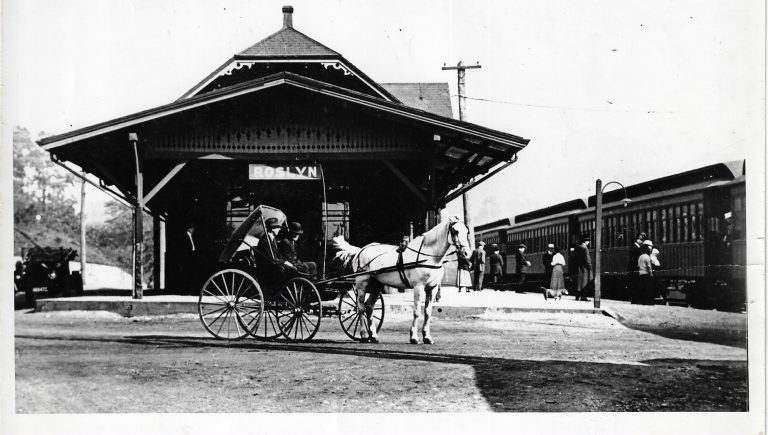
By Sophia Lian
The Long Island Rail Road (LIRR) has served to connect Long Island to New York City since the early 1800s, although it took until 1864 to build the first Roslyn railroad station.
What many do not know is that the LIRR’s original purpose was to create a faster route from Brooklyn to Boston.
The rail route, completed in 1844, first took passengers from Brooklyn to Jamaica, Queens.
It then connected Jamaica to Greenport, located on the North Fork of Suffolk County. At Greenport, passengers took a ferry to Stonington, Conn., where another train enabled travel to Boston.
Early investors and engineers of the route were confident that this plan would be the best way to reduce travel time because constructing a direct rail line going through the hills of New England seemed impossible.
Their plan proved to be prosperous, rivaling Cornelius Vanderbilt’s steamship line and cutting down travel time to Boston from New York from 16 to eight hours.
In 1850, the successful construction of a direct rail line to Boston put the LIRR Company at risk of bankruptcy. As a result, the company changed direction in their business plan by focusing on providing services to tourists and farmers on Long Island that needed access to markets.
The railroad had expanded from Jamaica to Hicksville in 1837, allowing a passenger to commute between the two towns in 45 minutes. However, in 1837, Roslyn residents still had to travel to Mineola to take the Hempstead Branch.
Under Oliver Charlick, former president of the LIRR, a Glen Clove branch train provided service connecting Mineola to Glen Head and included a stop at Roslyn beginning in 1865.
This new form of transportation allowed local farms to ship fresh milk to New York City from Roslyn Station quickly.
The Long Island Rail Road continues to be a method of transportation that connects Roslyn residents to the rest of Long Island and New York City.
During the 1980s, the Roslyn station house was moved to the south side of Lincoln Avenue and restored to its 19th century appearance, in part by the Roslyn Landmark Society.
To learn more about the history and for an inside look into Roslyn’s Long Island Rail Road Station, visit the Roslyn Landmark Society’s website at roslynlandmarks.org. You can also visit the Bryant Library’s Local History Collection at localhistory.bryantlibrary.org to explore more of Roslyn’s historical past.
Sophia Lian is a Roslyn Landmark Society 2024 Gardiner Young Scholars Program high school intern and part of the new “Young Historians” collaboration between the Roslyn Landmark Society and Schneps Media LI. Special thanks to the Bryant Library’s Local History Collection for providing research assistance.






